CAPRA in Costa Rica
In Costa Rica, the stochastic modelling of natural hazards, in general, and CAPRA, in particular, has been seen and used as an opportunity to increase the knowledge about natural hazards and find out forms to deal with.
There have been some developments, within the framework of Disaster Risk Management process, of three stimulating activities:
- The design of a Catastrophe Risk Transfer Vehicle (CRTV).
- Presidential Decree No. 36721-MP-PLAN: “Creation of a Model of Evaluation of Vulnerability of Disasters Risk due to Natural Hazards” (the Decree).
- A Technical Assistance Project with the Costa Rican National Public Water and Sanitation Enterprise (Acueductos y Alcantarillados, AyA). (AyA TAP).
The CRTV provides a risk transfer strategy based on a three-layer scheme (reserves, GoCR guarantee by a DDO-type instrument and reinsurance). Because of such strategy the GoCR will be able, when implemented, to have its more important assets fully insured against earthquake with a cost efficient scheme.
With respect the Decree, we have that the main reasons for its creation are the enormous exposure of the country to natural hazards and the decision of the GoCR to exert an active disaster risk management approach.
The institution in charge of the model is the “Comisión Nacional de Prevención de Riesgos y Atención de Emergencias” and they are using CAPRA to implement the Decree’s stochastic model. Important to mention is the active role of the different “Technical –Scientific Committees” are playing in order to have the model fully validated and appropriated.
The Decree, published in August of 2011, declares the use of the model compulsory, with the purpose of disaster risk reduction, for all the State institutions and for areas like: territorial planification, human settlements and housing projects, investment in public infrastructure and the execution of risk transfer mechanisms and insurance. For other participants -like the academy, private activity and insurance regulation- the model is of reference and its use is recommended.
Therefore, by virtue of the Decree, Costa Rica is establishing CAPRA as a standard tool for Disaster Risk Management purposes.
Finally, the on-going TAP with AyA provides us with an excellent example of the usefulness of CAPRA -for the complete Disaster Risk Management process- of an entity that provides lifeline services as the potable water supply and the handling of waste water for the whole country.
There have been some interesting first products involving both physical results -which, for example, may be used to reduce the frequency and/or severity of the expected losses- and financial results, which may be used to build up more rational insurance coverage and to support the whole decision-making process.
By using CAPRA the decision-maker will be in such a position to receive answers to questions like, for example: What are the most vulnerable components of the water supply system and of the waste water system? What is the expected damage? Is there a concentration on the damages? In what type of components should be invested money as a priority?
Thus, for example, the prioritisation of several identified mitigations works can be decided by using the concept of “Annual Expected Loss”, with different scenarios of structures quality and paying attention to aspects like concentration of damages and population affected by the disruption of the water supply.
From the financial point of view, the concept of “Probable Maximum Loss (PML)” or “Loss Exceedance Curves (LEC)” can be used to design a -a more cost efficient- “First Loss” insurance coverage.
